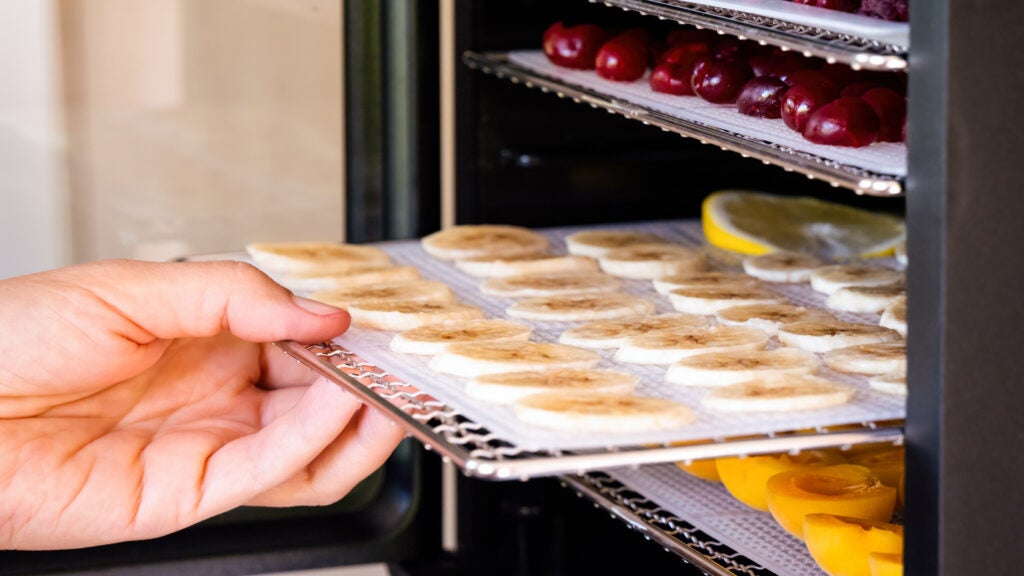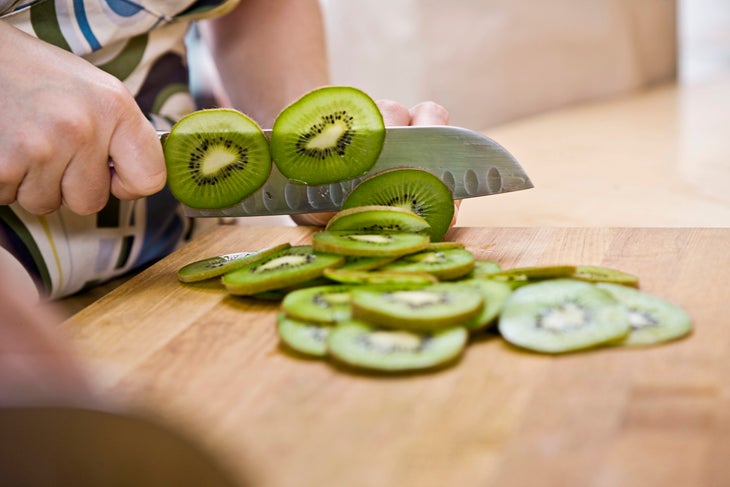



Most of us will be hanging up our overnight packs for the colder months, but dark evenings are a great excuse to spend some time in the comfort of our own home, planning and experimenting with dehydrating backpacking meals.
Does planning out what you’re going to eat next summer on the trail sound like overachieving? Maybe. But getting friendly with your dehydrator (or oven) can certainly be a fun way to fill up an otherwise dreary winter afternoon, and the reward of tasty homemade food on the trail will be oh, so worth it.
There are different avenues for making your own dehydrated food, and it might take some tinkering to figure out what works best for you. Here are a few tips and tricks to get started with homemade dehydrated meals.
Dehydrated fruit is one of the easiest ways to dip your toes into making your own backpacking food. Bonus points: it can be done in an oven on the lowest temperature setting if you don’t have a dehydrator. Slice apples, pineapple, peaches, pears (whatever sounds good) into ⅛-inch slices and dehydrate until they feel dry to the touch and there is no visible moisture. You can add spices if you’d like, or enjoy them plain.
Dairy, other high-fat foods (like nut butters), and eggs don’t work well for dehydrating at home. Instead, buy them separately and add to your meals later on. Peanut butter packets, cheese, and powdered eggs are all easy items to leave out of your dehydrated meal and pack in with it.
I like to re-use similar base ingredients for a variety of different dinners. For instance, choosing a pasta and then mixing and matching different sauces and vegetables can be any easy way to make three or four dinners at once. Same with grain and bean bowls; by creating a base you like, you could have anything from taco bowls to peanut sauce and stir fry bowls.
There are plenty of full meals that can be pre-made, dehydrated all at once, and sealed up for the trail. This is my personal favorite way to bring my own meals on the trail, since I can control all the spices and flavor easily before I dehydrate it. Dehydrating risotto is one of my favorite easy backpacking meals since it’s easy to make a big batch that I can divvy up into quite a few dinners. Vegetable chili and lentil soup are also favorites, since they already have a pretty uniform consistency that makes it easy to dehydrate. If the structure of the meal is crucial (like enchiladas) it can be tough to dehydrate since it’s almost impossible to preserve the size and shape.

Whether you’re slicing pineapple or dehydrating a full meal, it’s important to get everything into similar sizes so that the food will dehydrate evenly. If you’re dehydrating a fully cooked and assembled meal, you may have to stop and stir the tray a few times during the drying process.
Once you’ve dehydrated your food, it’s key to make sure you don’t introduce new moisture. Pre-packing your meals in a vacuum sealed bag is ideal. If you don’t have a vacuum sealer, be sure to store them in an airtight container (like a glass jar) and add them to a sealable bag before you hit the trail. If vacuum sealed, your food will easily last 6 to 12 months (potentially longer, but I’ve always scarfed them down in that window).
From 2023

